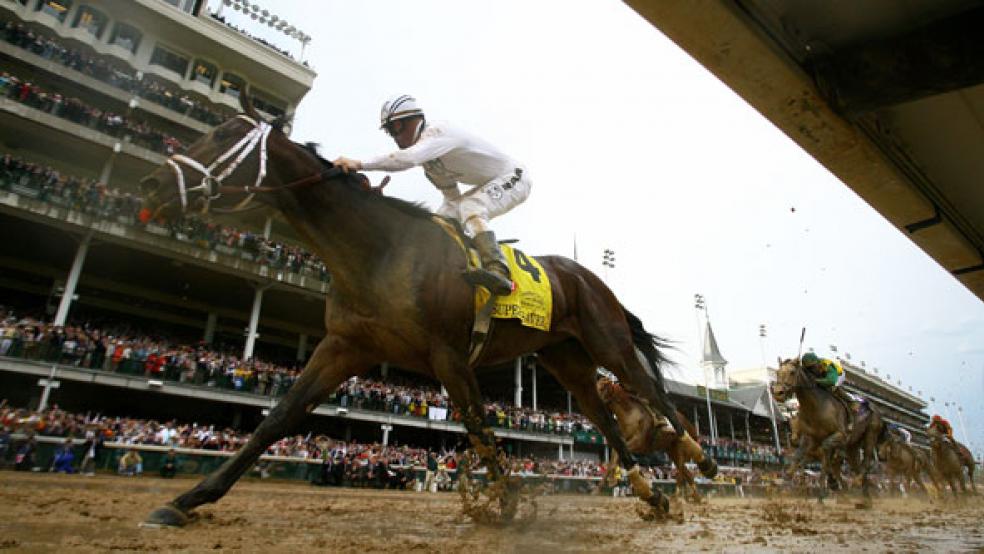They rightfully call the Kentucky Derby the greatest two minutes in sports, a mere snapshot of America’s oldest sport. In 1956, however, another American original, the writer John Steinbeck, tried to quantify this annual Calvary charge in the lyrical language it deserved.
"During Derby Week, Louisville is the capital of the world," he wrote. "The Kentucky Derby, whatever it is — a race, an emotion, a turbulence, an explosion — is one of the most beautiful and violent and satisfying things I have ever experienced."
By the numbers, the Derby takes place on an even grander scale. Its economic impact on this old river city is at least $217 million, according to a study by Wilkerson & Associates in 2001, the last year the study was done. That’s a number economists here say has doubled over the past ten years.
In 2009, for example, 153,563 people gathered beneath Churchill Downs’ iconic twin spires on Derby Day and bet $21 million. Throw in the wagers that came in from far-flung tracks, off-site betting parlors and online, and $155.9 million was bet on Derby Day that year, $104.5 million alone on America’s greatest race.
The numbers were even higher in 2010. Last year a record crowd of 155, 804 was on hand, despite inclement weather early on, and total wagering from all sources, including on-track and off-track betting, was $112.7 million, a 7.8 percent increase from 2009.
It costs NBC about $7 million annually for the broadcast rights to the race, a deal that’s been renewed through 2015. In 2009 16.3 million viewers watched the tiny gelding, Mine That Bird, romp home first to capture the blanket of roses, while in 2010 the audience was even higher: Some 16.5 million people watched Super Saver take first in a mud-strewn race (both winning horses were ridden by the same jockey, Calvin Borel). Last year’s race was the most watched Kentucky Derby since 1989, according to Nielsen data.
More than $127 million was paid out to those holding winning tickets for Mine That Bird. There weren’t many of them: The gelding went off at stratospheric odds of 50-1, which meant he paid $103.20 for a mere $2 bet. Last year Super Saver went off at odds of 8-1 and paid $18 for a $2 win ticket.
So you own the horse that won the Derby: How much is that worth?
The 2008 winner Big Brown was syndicated for stallion duty north of $30 million. In 2010, he was commanding $55,000 per mating (which perhaps really is the greatest two minutes in sports — or at least among the most lucrative). He covers more than 100 mares a year. You do the math.
As for the rest of us, we need sustenance to spend a whole day gambling with both hands. In 2009, 142,000 hot dogs, 18,000 barbecue sandwiches and 1,892 sheets of Derby pie were consumed. Best of all, Churchill Downs needed 7,800 liters of bourbon to serve 120,000 Mint Juleps.
But if looking natty is your thing, make a stop this year at the Kentucky Derby Museum gift shop and check out the limited edition fedora in honor of the 137th race. The genuine Panama hats are hand-woven in Ecuador, finished in the U.S., and capped off with a feather. The price for viewing the Derby in such style: $175.
This isn’t exactly Steinbeckian … But as they have been saying down here in Louisville for 137 years: Happy Derby!
This piece first appeared in The Fiscal Times in 2010 and has been updated.
Related Links:
Joe Drape’s Kentucky Derby Picks (The New York Times)
March Madness Chedda: Slam Dunk for the NCAA (The Fiscal Times)
Super Bowl: Biggest Economic Engine in Sports (The Fiscal Times)



